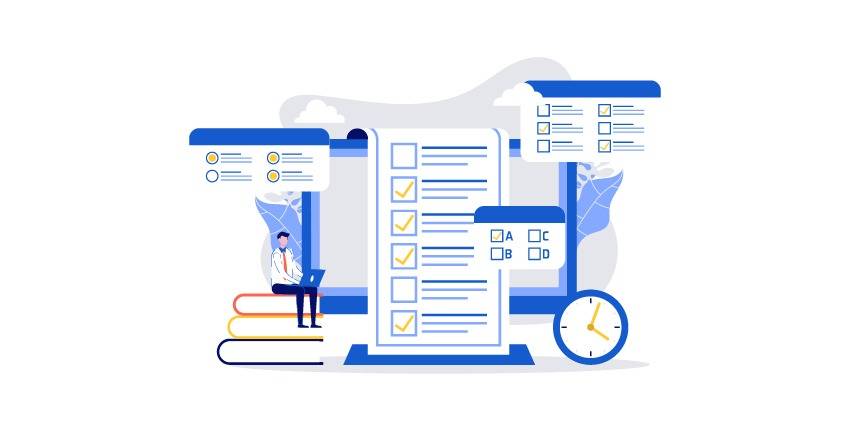You must thoroughly test any piece of software or new functionality before distributing it to your users. Put it to the test. Break it if you can. Often, make sure that whatever your users do is properly responded to. Use manual test methods and also use automated QA testing software.
The method of checking software functionality is outlined in test plans. A test plan lays out each move taken to achieve a specific outcome, as well as the goal of each action. The test’s estimated resources, threats, and staff are also highlighted in the plan. If you want to eliminate Bugs and other mistakes in your program before it’s released to consumers, you can use a test plan.
In this article, we’ll discuss what a test plan is and what you should include in your test plan template.
Let’s start with defining what a test plan actually is.
A test plan template is a comprehensive document that details the test strategy, goals, resources required, schedule, and performance criteria for a particular new function or piece of software to be tested.
Of course, the main aim is to find bugs, glitches, and any other flaws that might cause the program to behave incorrectly or give the users a bad experience. A test plan, in particular, ensures that the software:
- Satisfies the specifications that influenced its design and production.
- Responds appropriately to a variety of inputs.
- Meets the performance criteria you’ve set and can be used as expected.
- Installs and runs in all of the intended environments.
- Obtains the outcomes you and your stakeholders desire.
Although these seem to be simple objectives, they are rarely followed in practice. However, they must be followed to the core if you want to create an efficient test plan.
However, it’s almost impossible to test every situation, setting, or use case that your software will face over the course of its lifecycle. Rather, software flaws, bugs, and defects can arise as a result of:
- Coding mistakes.
- Unrecognized or ignored requirements, such as edge cases, scalability, or even protection, are examples of requirement gaps.
- Changes in the environment, such as new software, hardware, or changes in the source data.
Writing a straightforward, but detailed test plan template is a difficult balance to strike. You want to provide as much information as possible to ensure that you don’t overlook any obvious mistakes. However, you don’t want to overwhelm your team with testing activities, postpone your publication, or introduce new errors as a result of your “fixes.”
What to focus on when creating a test plan document?
In general, there are a few key areas you’ll want to include in your test plan that will serve as the document’s foundation:
1. The scope/coverage
As previously said, designing a test plan is all about finding the right balance. You want to be thorough without being overbearing, so be clear on what will be included in the test plan.
Following a brief introduction that highlights your test plan goals, high-level scope, and schedule, you must determine what you will and will not test.
This is your test scope, and if you don’t take the time to be specific and answer both what you’ll test and why you’ll test it, it can easily spiral out of control.
- What kinds of tests are you going to run?
- Why did you choose these (rather than others)?
The test conditions and scope must be agreed upon by both parties (QA team & client). As a best practice, explain the tests and why they were performed using industry-standard or at least agreed-upon criteria and terminology. There will be no ambiguity or doubt about what you checked this way.
2. Procedures: How will you conduct these tests?
The next step is to clarify your test plan in detail. As much as possible, go into depth.
- What guidelines can the tests adhere to?
- What metrics will you collect and at what stage will you collect them?
- What number of different configurations or conditions can you test?
- Do you need to verify any special conditions or procedures?
You’ll also want to know whether or not your test was successful. What are the pass/fail conditions for each test, in other words?
This isn’t the only criterion to keep in mind. There are a few other popular scenarios to include in your test plan, such as:
- Criteria for an exit. When is it appropriate to stop testing a function and conclude that it is “successful” in achieving its goals?
- Criteria for suspension. When do you take a break from a test? Is there a point at which you can avoid checking and start searching for solutions when you reach a certain number of errors? What are the steps for shutting it down and recording what has already been done?
- Requirements for resumption How do you know when a suspended test should be resumed? What are the steps for checking and picking up what has been done?
Finally, you must detail the resource requirements and plan for your test project. Who is in charge of research, and what resources (both technological and human) do they require? Where and for how long will the testing take place?
3. Responsibilities: What are the outcomes you want to achieve?
What are the test deliverables that you require? This includes the data you want to obtain, how you’ll compile it into reports, and the problems and tasks you’ll hand over to the development team.
Each test deliverable should be delegated to a particular individual on your team in a section on roles and responsibilities to ensure that nothing is overlooked.
It’s important to keep in mind that this is just a brief outline of what should be included in a test plan. You’ll build a library of test plan models over time that will act as a guide for new product launches, enhancements, and features.
Conclusion
Testing isn’t yet another item on your to-do list. It’s a critical, potentially project-altering process that should be carefully considered and prepared.
Before you start testing manually or through QA testing software, you have to create a test plan. Your test plan template will make you realize the goals, determine the scope of testing, build pass/fail requirements, document the method, and provide the documentation and artifacts you need to make your product or function the best it can be from start to finish.















































